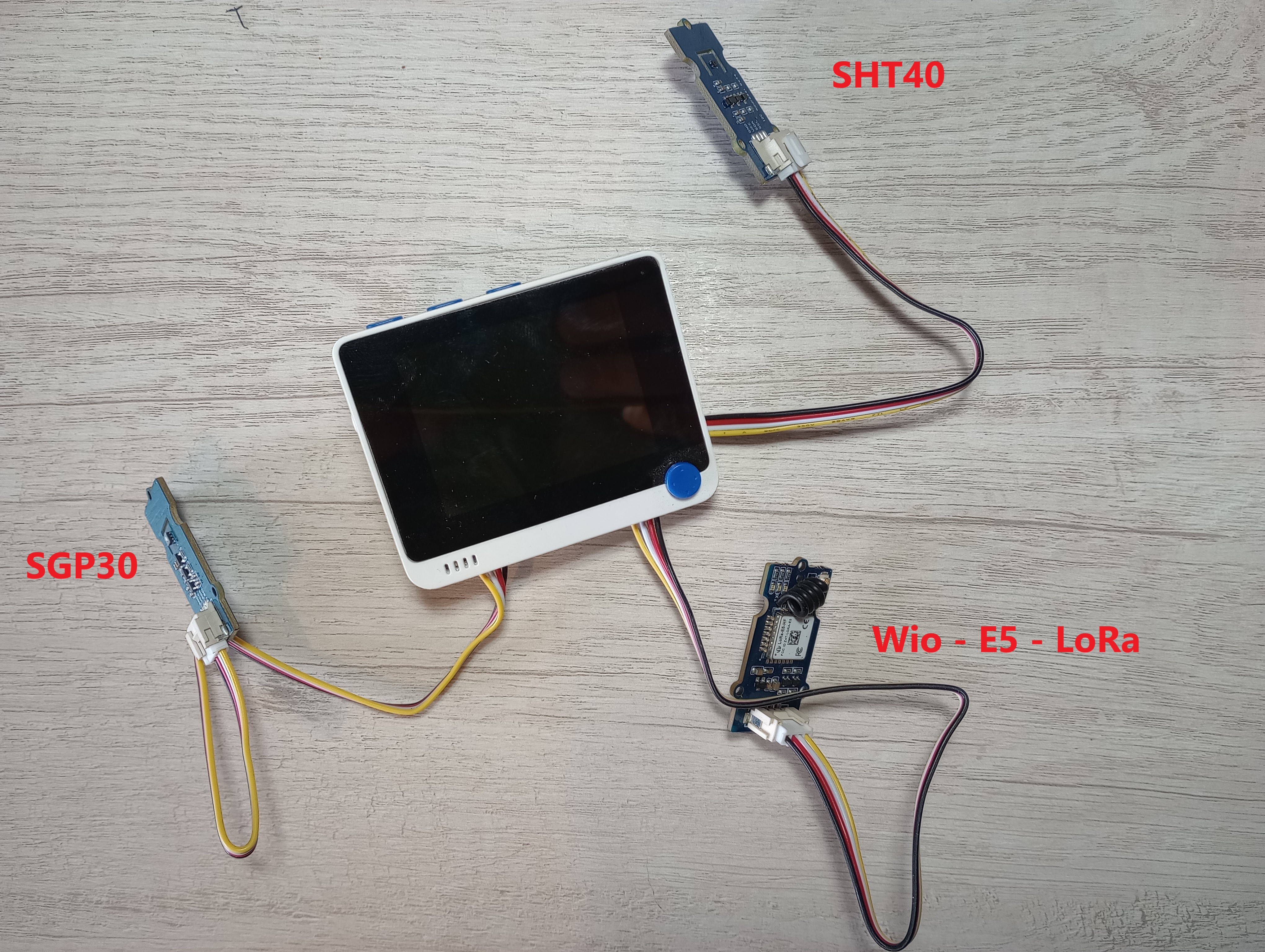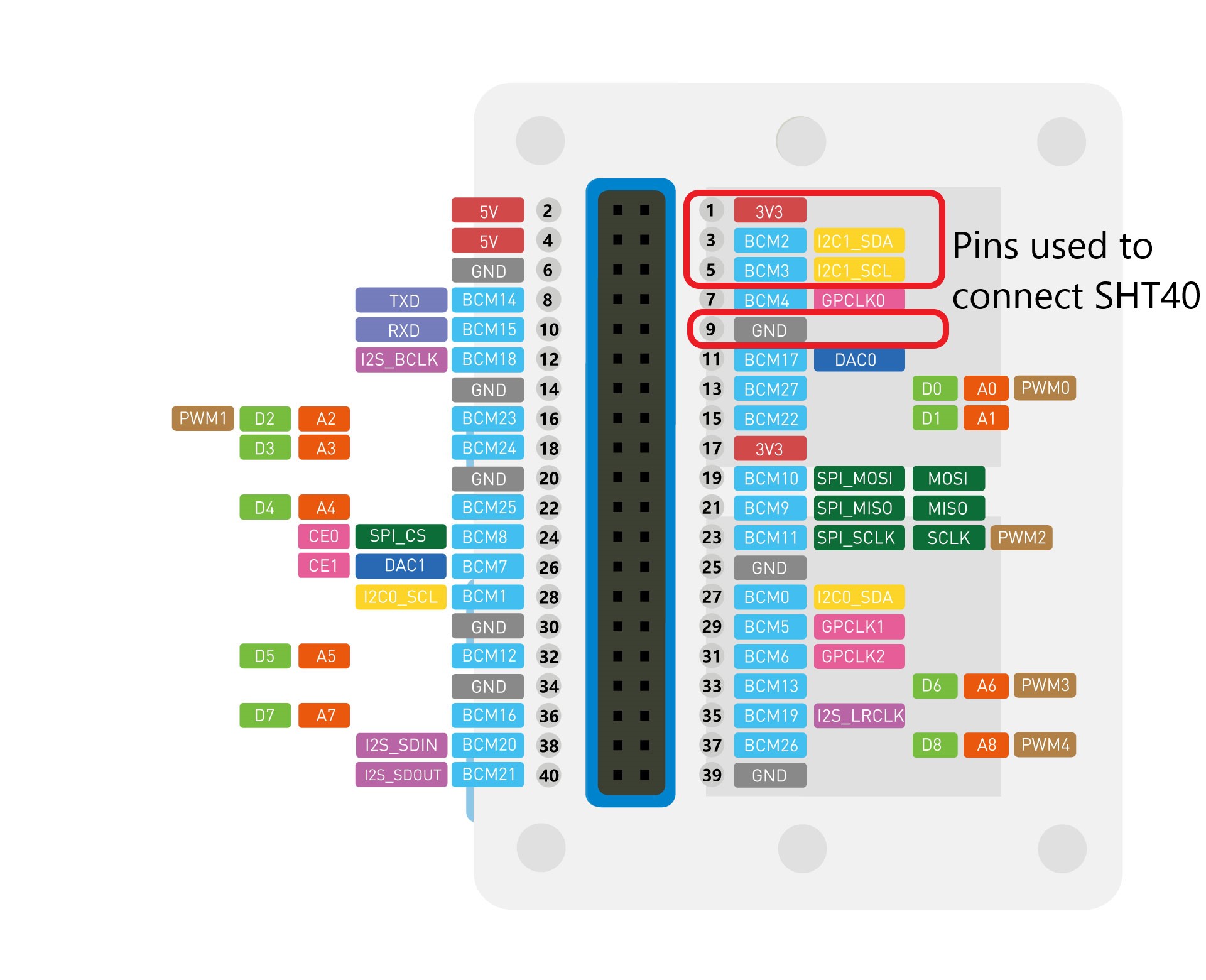Wildfires are recurrent events in some regions of my country (Argentina).
Fighting a wildfire is a highly complex task. Once the fire spreads, stopping its advance becomes almost impossible.
So, detecting the fire early is crucial to fight it and avoid great fires.
There are different ways of detecting fires using technology: satellite images, drones, thermal cameras, and environmental sensors.
In this project, I've chosen to use environmental sensors to detect the presence of smoke.
The hardwareFor this project, I've used the SeeedStudio kit for collecting data and sending it by using LoRaWAN.
These are the sensors I've used:
- Sensirion SGP30: This sensor measures VOC and eCO2 and delivers the values using an I2C interface.
- Sensirion SHT40: This sensor measures temperatures and relative humidity. It also uses an I2C interface to transmit the values.
Regarding the microcontroller unit, I've chosen the Wio Terminal device. It comes with a lot of features, including multiple sensor interfaces, WiFi, BLE, and so on. You can read a complete description of it on https://wiki.seeedstudio.com/Wio-Terminal-Getting-Started/
For connecting the device to a LoRaWAN network, I've used the Grove - Wio-E5 module.
The setupThe setup of the complete solution involved several systems.
- The data coming from the sensor is sent to a LoRaWAN server.
- A Telegraf instance consumes the data from the MQTT broker of the LoRaWAN server. This instance also writes the data into an InfluxDB bucket.
- A Grafana instance gets the data from the InfluxDB bucket and displays it on a dashboard.
You can see the complete architecture in the following figure.
The experiment
To simulate an incipient wildfire I used some pieces of vegetable carbon (charcoal) and paper.
I intended to produce smoke from the carbon, simulating the burn of real vegetation. You can see the deployment in the following figures.
The next figure shows the evolution of the VOC and eCO2 values.
As you can see, several peak values correspond to eCO2 and VOC. After repeating the experiment several times, it's evident that the sensors saturate easily whenever the smoke reaches them.
ConclusionIt is the first approach to address the early detection of wildfires. The behavior of the sensors, when they are exposed to smoke coming from vegetable fuel, was evaluated.
It was noticed a high sensitivity to smoke, and the SGP30 sensor saturated very fast in the presence of smoke.
On the other hand, the whole system (LoRaWAN - Telegraf - InfluxDB - Grafana) offers a reliable solution for getting the data, showing it, and analyzing it.
Further considerations and workTo continue with the development, the following steps are required:
- Find an optimal measurement period to detect the smoke, and transmit the data. The device has to measure for several seconds to be able to detect smoke. Then it has to transmit the data and go to sleep for several minutes.
- Evaluate the use of an ML model in the device, for improving the detection.




















Comments
Please log in or sign up to comment.